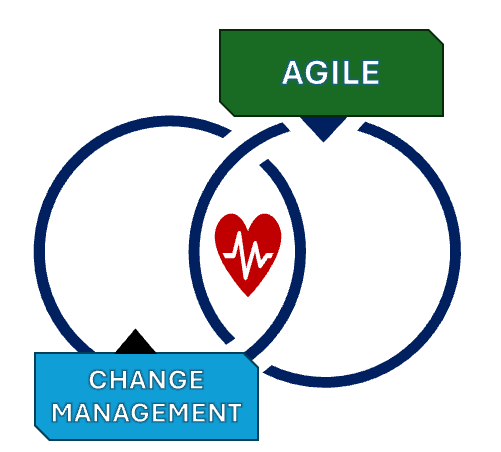“We’ve Adopted Agile and Trained Up Our People; Why Would We Hire an External Enterprise Coach as Follow-Up?”
The Value of Outside Coaches in Transforming Organizations

Executive Summary
Many organizations increasingly adopt agile practices, often solely for the purpose of expediting the delivery of a product, service, or business value. Decision-makers believe that the journey ends once agile frameworks are in place, and employees have been trained or have certifications. However, despite the adoption, companies can often struggle to reach their full potential without external guidance. Professional coaching enhances organizational performance, surfaces and addresses latent challenges, and helps move from maintaining to excelling.
Introduction: Agile Expansion
Agile and supporting frameworks, such as Scrum, Kanban, etc., have transformed the way organizations operate. In the last twenty-five years, you can almost trace its auspicious beginnings from the snowbird’s agile manifesto, moving from the West Coast software development industries to business agility, and now, so much related to government need. Agile practices have spread across industries as a means of increasing adaptability, customer focus, and continuous improvement. However, simply adopting agile methodologies does not guarantee optimal outcomes. Many organizations plateau or face new challenges as they scale their agile practices, particularly within complex systems.
Key Question: Why would an agile organization still need an external enterprise coach?
Enterprise coaches can provide significant value even to organizations that are already agile; continuous coaching provides more than “just” maintaining sustainable agility. Culture and change aren’t always asynchronous, there needs to be a good facilitator with an unjaundiced eye to get to that next plateau.
1. Continuous Improvement and Growth
One core tenet of agile emphasizes continuous improvement, where iterative enhancements are made to processes, teams, and outcomes. Over time, many organizations often struggle to sustain an agile mindset, instead focusing only on faster output. While there may be a customer-centric focus, it is often at the expense of internal collaborations and internal relationships. There are rewards for delivery and output, but often not for creating product leaders, and future leadership development. As for the 4 values and twelve principles—how often does that get revisited? If an organization uses the Objectives and Key Results approach, if the why wasn’t captured, this will end up being a framework built on sand rather than a solid foundation.
An enterprise coach helps people at ALL levels look for opportunities for better performance and to avoid falling into complacency. They foster a growth mindset, helping individuals and identifying systems’ weak spots alike, and an even better coach will help individuals get what they want over just an output checklist.
2. Addressing the "Agile Plateau"
Many organizations experience an "agile plateau" after the initial success of implementing agile practices. They establish regular sprints/quarterly reviews, use product backlogs, and hold retrospectives but find that productivity gains start to diminish or that deeper organizational issues remain unresolved. If the culture really hasn’t changed, and has no baseline to show that change, very often the Agile PMO/ACOE becomes hierarchical in nature. “You’re not agile if you’re not doing my kind of agile.” “An enterprise coach is a bigger, better title than a team coach.” If you are selling food, a sandwich or a chicken leg as a choice—one is better than the other to you, for specific wants and needs only you have identified.
Hiring an external enterprise coach for the sole purpose of a “refresh” allows for fresh perspectives and insights that help organizations break through a status quo plateau. By observing processes, group meetings, and team dynamics from an external viewpoint, a coach can identify overlooked nuanced and overt issues, inefficiencies, or opportunities for refinement that might not be apparent internally.
3. Scaling Effectively
Scaling agile practices beyond small teams and projects introduces complexity, especially when applied across different departments or in large organizations. Frameworks like SAFe (Scaled Agile Framework) or LeSS (Large-Scale Scrum) provide solutions for scaling, but they often require careful implementation and constant iteration.
Coaches play a crucial role in guiding organizations through the challenges of scaling agile, ensuring that key behaviors for cross-functional collaboration, alignment with business goals, and customer-centric focus are happening. A coach also helps tailor scaling frameworks to suit an organization’s unique needs rather than adopting a one-size-fits-all approach. Product Managers, managing directors, developers whomever works within the system, has expertise. They are heads down(hopefully) on meeting the demand or surfacing the need. When we learn an agilist-as-change-agent “removes impediments,” it means not only when something is brought to their attention. They are the reconnaissance needed to scan the horizon on adaptive trends and better ways of working, facilitating stakeholder engagement and feedback loops alike.
4. Enhanced Team Interaction and Culture
Successful organizations rely heavily on team dynamics, trust, and open communication. However, conflicts, misalignment, or lack of psychological safety can undermine interpersonal communication, and product effectiveness.
A coach works to strengthen team dynamics by facilitating better communication, addressing and surfacing conflict and challenges, while providing the space for an environment of trust. Coaches often serve as neutral third parties who can mediate conflicts, provide feedback, and encourage self-awareness within teams. In this way, they nurture a healthy culture that aligns with core components of collaboration, respect, and transparency.
5. Objective Feedback and Accountability
Internal teams often become entrenched in the day-to-day demands of their work, making it difficult to step back and objectively evaluate their own performance. A coach provides impartial, objective feedback that helps organizations stay aligned with their goals and what intrinsically matters to its people A good coach is not afraid to take a stance.
They hold teams and leaders accountable to what is actionable, ensuring responsiveness to change, customer collaboration, and continuous delivery—are upheld in practice, not just in theory. They act as a mirror, reflecting areas where an organization’s business units and/or teams may be veering off track and guide them to course-correct in real-time.
6. Leadership Evolvement
Change management requires a fundamental shift in leadership. Successful leaders have successful support from talented impassioned employees, and to get that support, they need to focus on enabling their teams, fostering autonomy, and removing obstacles rather than dictating solutions. For many organizations, this shift can be difficult for leaders who are accustomed to traditional management approaches. And they don’t want this called out in front of the very people they need to trust them, because making changes doesn’t mean throwing out the experience that got you there in the first place.
Having an external coach supports leadership in making adaptive transitions by offering guidance on promoting a culture of empowerment, and helping leaders understand their evolving roles allowing for quick pivoting within their organization. Coaches provide the tools and techniques needed to lead in a constantly changing environment. They can help develop the leadership pipeline within an organization and help leaders surface who their creative problem-solvers are.
7. Adaptability in a Changing Environment
Being able to respond to change, both in the market and within an organization gives a competitive edge in any industry. While frameworks are the window to seeing the adaptations, a model to make sense, organizations often struggle to navigate large-scale transformations, disruptions, or evolving customer needs in the midst of the necessary changes.
A coach helps organizations with the flow of value in the face of these changes, guiding them through periods of uncertainty. Coaches are adept at helping organizations recalibrate their strategies and operations while staying true to core principles, enabling them to pivot quickly and efficiently.
Case Studies
Case Study 1: Breaking Through the Agile Plateau
A mid-sized software company had been practicing agile for two years but began noticing diminishing returns in their sprint outcomes. Despite regular retrospectives, the team could not identify the root cause of the decline. After bringing in an agile coach, the organization was able to surface hidden inefficiencies, including miscommunication between development and product teams. The coach facilitated better collaboration through workshops, improving both team cohesion and product delivery.
Case Study 2: Scaling Across Departments
A large enterprise in the financial services industry faced difficulties scaling agile practices beyond its technology teams. Leadership recognized the need for alignment across departments but lacked the expertise to implement frameworks like SAFe. With the help of a coach, the company successfully scaled agile practices across operations, marketing, and HR, integrating agile principles into their overall business strategy. This led to faster decision-making and improved responsiveness to customer needs.
Conclusion: Coaching as a Catalyst for Sustainment
In conclusion, adopting agile frameworks is only the beginning of a long-term journey toward creating a truly adaptive, customer-focused, and resilient organization. Coaches provide critical support by offering external insights, ensuring continuous improvement, developing leadership, and fostering team dynamics. Even in agile organizations, a coach can be the difference between simply practicing agile and truly thriving in an agile environment.
With the rapid pace of emergent technology and an overload of informational resources, the role of an external neutral coach is not a luxury, but a necessity for organizations that aim to stay ahead of the curve and consistently deliver value to their customers. An enterprise coach is multi-faceted in addressing resistant behaviors to aid in change management and transformations of many kinds. The investment in coaching yields returns in the form of higher performance, greater team satisfaction, and enhanced adaptability, making it a powerful enabler of sustained organizational success.
---
Contact Information:
To learn more about how follow-up coaching can benefit your agile organization, please reach out to
Cascadia Connections at
info@cascadiaconnections.com

